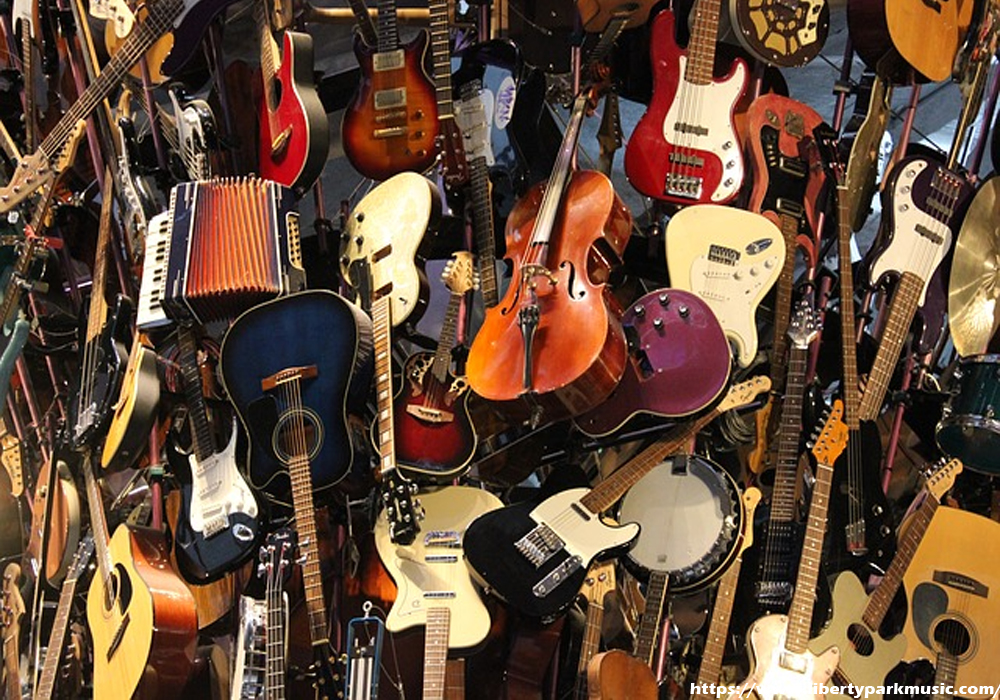 Picking a Musical Instrument For Your Child – A Parents’ Guide to Woodwinds
Picking a Musical Instrument For Your Child – A Parents’ Guide to Woodwinds
Many individuals get themselves tossed into the universe of melodic instruments they don’t know anything about when their kids initially start music at school. Knowing the nuts and bolts of good instrument development, materials, and picking a decent store in which to lease or purchase these instruments is critical. So what process should a parent take after to settle on the best decisions for their tyke ?
Obviously the initial step is to pick an instrument. Give your kid a chance to have their decision. Children don’t settle on a lot of critical choices about their life, and this is a major one that can be extremely engaging. I can likewise say from individual experience that children have a characteristic instinct about what is beneficial for them. At last, my most grounded guidance is to put a youngster into a space to attempt close to 3-5 distinct decisions, and let them settle on their decision in light of the sound they like best.
This data is proposed to expand your perspectives, not to make an inclination, or to set you in a place to nit-pick in the store! Most instruments are amazingly well made nowadays, and picking a regarded retailer will enable you to confide in suggestions. Ask your school or potentially private music instructor where to shop.
Woodwind instruments are made everywhere throughout the world, however basically in the USA, Germany, France, and China. When we discuss Woodwind instruments, we are alluding to individuals from the Flute, Clarinet, Saxophone, Oboe, and Bassoon families.
WOODWIND BASICS
All Woodwinds include a genuinely mind boggling, interconnected system that must be directed so that the keys all move and seal the gaps of the instrument when they should. Your trusted neighborhood retailer will make certain to get you an instrument that is ‘set up’, albeit numerous new instruments come prepared to leave the container. When you are managing a fresh out of the box new instrument, you ought to take it back to the store for a registration after around 3 months, or sooner if there are any issues. Since the greater part of the materials are new and tight, they may leave control as the instrument is softened up. This is ordinary. You should rely on this sort of control each 12-year and a half, or sooner if the instrument is played a ton.
Woodwinds additionally have cushions. Cushions are the piece of the instrument that seal over the gaps in the body of the instrument (toneholes). An immaculate seal is required to deliver the right note. Tuning and sound quality are influenced by an accurately ‘situated’ cushion. These additionally infrequently require supplanting, as a component of your consistent support, albeit once in a while at the same time. At the point when all cushions should be supplanted (once every 8-10 years), this is done as a feature of an exhaustive ‘update’ of the instrument which incorporates dismantling everything, cleaning it, refitting and fixing free parts, and supplanting springs and plugs as fundamental. This is an uncommon system, and for the most part held for experts. The upkeep repair is the most well-known one for guardians.
Due to the numerous poles and key-containers (these hold the cushions), there are a great deal of exceptionally touchy, simple to twist parts of these instruments. Knowing how to amass them legitimately is imperative to maintaining a strategic distance from undesirable repair costs. Make certain to approach your neighborhood retailer for the correct approach to amass your instrument. This is regularly the reason for the most widely recognized repairs, trailed by finding things.
MATERIALS
Strangely, not all woodwinds are produced using wood. Woodwinds and saxophones are made principally of metals; Nickel-silver and silver for Flutes, and for the most part Brass for Saxophones. We’ll adhere to these materials for these instruments for effortlessness’ purpose, as there are progressively more decisions accessible.
For whatever is left of the Woodwind instruments, wood is without a doubt utilized for the fundamental development of the instruments.
Woodwinds and Saxophones
Understudy Flutes are produced using Nickel-Silver, at that point plated in silver. Nickel-Silver is a mix of metal with Nickel, which has a comparative hope to Silver when cleaned, subsequently its name. One of its essential points of interest is that it is more grounded than metal or silver without anyone else. As you advance to better instruments more Silver is utilized, beginning with the headjoint (which is the most imperative factor in a decent nature of sound). More on headjoints later.
Saxophones are by and large produced using metal. Endeavor to discover an instrument that has ‘ribbing’ on the body; additional plates of metal that give basic help over a zone where various presents join on the body. This gives quality to the infrequent and unavoidable knocks that your young understudies will undoubtedly have. Some understudy Saxes have keywork made of Nickel-Silver, which is a decent procedure for quality in a powerless region.
Clarinets and Oboes
Clarinet and Oboe bodies are commonly made of ABS plastic for understudy instruments. This is a decent methodology for knocks, yet in addition against the upkeep propensities and atmosphere changes that understudies confront. Middle of the road and expert instruments are made of Grenadilla wood (which is changing as Grenadilla edges towards the imperiled list). Since they are made of wood they should be secured against breaking. In the event that an understudy doesn’t swab their instrument out in the wake of playing, the dampness can make the wood grow and break. Moreover, expediting your instrument to class a cool day and playing it without enabling it to come to room temperature will make it break, or even burst. This is caused a weight differential from your warm air section within the instrument, versus the frosty temperature outside of the instrument. On the off chance that you choose to get a wood instrument, make certain your understudy is prepared and ready to care for it appropriately.
Keys on Clarinets and Oboes are for the most part produced using Nickel-Silver, yet can be made with Silver plating, or different materials.
Bassoons
Understudy Bassoons are produced using ABS plastic, yet there are some new creators in the market that offer Hard Rubber, and furthermore Maple (utilized as a part of expert instruments). A drawback for Hard Rubber Bassoons is that they are very substantial. On the off chance that you can get a decent wood Bassoon at a sensible cost, at that point pick this one. Wood offers the best acoustics for Bassoon, and can have the effect between a plain solid, and one that is rich and intriguing.
Keywork on Bassoons is similarly produced using Nickel-Silver, regularly silver plated.
MOUTHPIECES
Utilizing the word ‘mouthpiece’ for woodwinds can befuddle. Here are the instruments with the right names for the relating some portion of the instrument that makes the sound:
Flute: Headjoint
Clarinet: Mouthpiece (with a solitary reed)
Saxophone: Mouthpiece (with a solitary reed)
Oboe: Double reed (two reeds entwined with an opening in the middle)
Bassoon: Double reed (two reeds entwined with an opening in the middle)
Despite the instrument, this is the piece of the entire that has the best effect on the nature of the sound, in mix with the player’s close to home physical qualities. Understudies by and large utilize what they get from their instructor, however beneath are a few hints about how to maximize your hardware. Getting a decent mouthpiece can go before, and even defer the buy of another Clarinet or Sax, so incredible is the distinction with hard elastic. (For Flute, ensure your headjoint stopper is appropriately adjusted, and not dried out. Your nearby retailer will demonstrate to you best practices. In the event that there are issues, have them settled immediately, or pick an alternate woodwind. For more transitional woodwinds, pick a headjoint that isn’t just made totally of Silver, however is hand-cut. This won’t generally be simpler to play at to start with, yet the sound quality change will be worth making the jump. Silver sounds superior to anything Nickel-Silver, creating a superior tone quality, with more space for changing the quality as per the player’s needs. You can purchase headjoints independently, however it can be extremely costly, and I prompt against this until the point when you achieve an expert woodwind. Oboe and Bassoon utilize two restricting, marginally bended reeds entwined that vibrate against each other when air goes between them. Propelled oboists/bassoonists make reeds for themselves, a tedious, expertise overwhelming undertaking. It takes numerous years to figure out how to make reeds for yourself, that function admirably. Luckily, there are instant reeds that by and large address the issues of the understudy player. One key component you should test is to guarantee that the reed ‘crows’ impeccably at the pitch ‘C’. Crowing a reed is blowing through it when it isn’t appended to the instrument. Test the crow with a tuner. Clarinets and Saxophones utilize a solitary reed (little bit of exceptionally all around molded and profiled stick) attached to a mouthpiece (by a ring called a ‘ligature’) that vibrates when air is passed between the two. The blend of these parts is critical to a decent solid. Most understudies get a plastic mouthpiece to start. Great plastic mouthpieces are made by Yamaha for both Clarinet and Saxophone, with the assignment of ‘4C’. I would prescribe a ‘5C’ in the event that it is accessible. It will be somewhat harder to play at in the first place, however a decent approach to get a greater sound immediately. In the event that you might want to show signs of improvement nature of sound with more space for good boisterous and delicate playing while at the same time keeping up and presenting a rich tone, at that point think about a Hard Rubber Mouthpiece. Hard elastic is better than plastic acoustically, and must be hand completed, dissimilar to the plastic assortment, which is released of a form and cleaned/tumbled for sparkle. These are perceptibly more costly, however you should hope to spend in the $100-150 territory for a good Hard Rubber mouthpiece. Great names include: Selmer, Vandoren, Otto Link, Meyer, Yamaha, and Leblanc. Your neighborhood retailer should stock no less than two of these brands for you to attempt – and you should attempt them! Since these are normally hand completed, they are frequently unobtrusively extraordinary.
Shouldn’t something be said about sizes ?
Clarinet and Saxophone mouthpieces have a wide range of measuring regions, however for simplici
Further readings:










